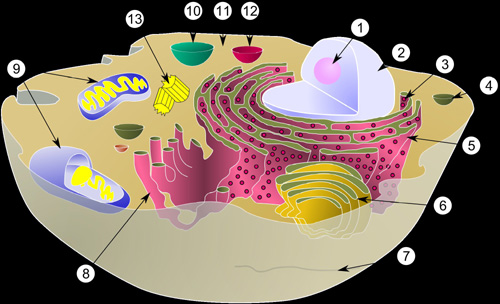How a β-cell Works
In the next day or few, I'm going to be discussing diabetes. What it is, and what the science says causes it -- at least to the current state of knowledge and understanding. This will serve as a prelude to a larger discussion on hyperinsulinemia and insulin resistance in the pathogenesis of Type 2 diabetes. Diabetes is β-cell dysfunction. Period. This does not mean that other organs and the organism as a whole are not involved in this dysfunction developing, but diabetes is, ultimately, an insulin deficiency syndrome. If that sounds "off" because of the hyperinsulinemia associated with T2, stay tuned!
So I'm going to cobble together a few sources to introduce (or reintroduce) some terminology and basics of β-cell function that will be used in future posts on this.
Molecular Formation of Insulin
On a molecular level, the final product, insulin, starts out as preproinsulin, is converted to proinsulin and then finally to the insulin. This is shown schematically below:
 |
| SOURCE. |
The preproinsulin contains a "leader" sequence shown in blue that facilitates its transport into the endoplasmic reticulum where it is cleaved in the process. The "C" chain in the original molecule facilitates the proper folding to bring the sulfur atoms in proximity for disulfide cross-links to form, and is also "clipped" once it has served this function.
Insulin Manufacture & Secretion
Below is a representation of a typical animal cell. It's funny, sometimes, where you can find such discussions, http://www.njmoldinspection.com/microbiology/organellea.html. I showed the link for this purpose but I encourage anyone interested to visit the link as it links to more detailed explanations of the various cellular components.
 |
| (1) nucleolus (2) nucleus (3) ribosome (4) vesicle (5) rough endoplasmic reticulum (6) Golgi apparatus (7) cytoskeleton (8) smooth endoplasmic reticulum (9) mitochondria (10) vacuole (11) cytosol (12) lysosome (13) centriole. |
The bolded triad of organelles comprise the protein generating factory of secretory cells like the β-cell. The protein chains "parts" are manufactured in the ribosomes (where genetic codes are "transcribed" into proteins made of linking amino acids in specific sequences). These are then assembled in the endoplasmic reticulum (ER) -- folding, cleaving, etc. It is in the transport into the ER that the preproinsulin becomes proinsulin as shown below.
 |
| Modified (labels and orientation only) from SOURCE |
 |
| partial screenshot SOURCE |
In the endoplasmic reticulum (ER) the remaining steps in converting proinsulin to insulin occur. Other proteins such as amylin are also assembled in the ER. These are then transferred to the Golgi apparatus (GA) which is like the shipping department of our factory. The GA manufacture the shipping containers called vesicles and package insulin (and other proteins) into the vesicles. These cleave off the GA (think lava lamp) and are transported to the inner surface of the cell membrane. The membrane of the vesicle fuses with that of the cell thereby releasing the contents to the outside. This process of secretion is called exocytosis. Unlike other transport methods whereby molecules pass through the membrane or through embedded protein channels in the membrane, exocytosis is a bulk transport whereby the vesicles fuse with the membrane and become part of it.
Whole Cell Insulin Production & Secretion Processes
Lastly, let's put it all together to include how this is stimulated and powered.
 |
| SOURCE |
The β-cell senses glucose by uptake(via GLUT-2 transport) and metabolism (glycolysis) that alters the ratio of ATP to ADP in the cell. This "inactivates the potassium channel that depolarizes the membrane, causing the calcium channel to open up allowing calcium ions to flow inward." Elevated calcium within the cell drives exocytosis of storage granules, aka vesicles. In this manner, insulin is secreted in controlled fashion.
Comments
@Evelyn - have you addressed the issue of the medical profession changing the definition of what diabetes is? I mean changing standards for diagnosis. It's terribly confusing to idiots like me. You read debunkers and you don't know whom to believe (with the cholesterol controversy in mind). Thanks!
keep up writing.
Here is my web-site ... diet plan for women
Post a Comment
Comment Moderation is ON ... I will NOT be routinely reviewing or publishing comments at this time..